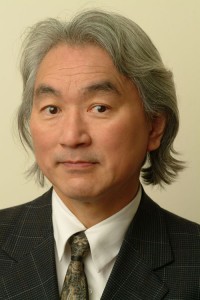Nuclear meltdowns nearly made northern Japan uninhabitable


Unsettling details about the scale of the nuclear disaster at Tokyo Electric Power Company’s (TEPCO) Fukushima Daiichi reactors have emerged, with a prominent American physicist saying that northern Japan was nearly “lost.”
Regulators at Japan’s Nuclear and Industrial Safety Agency (NISA) have revised its estimate on the amount of radiation that has escaped from the reactors to 770,000 terabecquerels – more than double its initial claim, the BBC reported today.
In comparison, the world’s worst ever nuclear disaster, which occurred 25 years ago in Chernobyl, Ukraine, emitted an estimated 1.8 million terabecquerels of radiation. A terabecquerel is multiple of a becquerel, a unit of measurement for radioactivity.
The Fukushima site continues to leak radiation due to cracks in reactor containment vessels, exposing nearby schoolchildren to 20 times the radiation received by atomic workers.
NISA has also admitted it was unprepared to handle the scale of the disaster, and released a timetable on how events unfolded revealing that three of the reactor cores went into meltdown.
Reactor number one’s fuel melted into lava-like corium within five hours of the March 11th earthquakes that triggered a tsunami that inundated the facility with seawater.
A meltdown in reactor No. 2 happened within 80 hours; reactor No. 3 melted down in 79 hours. These were all 100 percent core melts. Whether the meltdowns were preventable is a question for NISA, which Japanese government officials are now retooling to have a strictly oversight role.
Last week, nuclear reactor designer AREVA’s CTO Dr. Finis Southworth told me that the core meltdowns might not have occurred in the United States, because the Nuclear Regulatory Commission has put symptom-based procedures in place that would have compelled water to be pumped into the reactors sooner.
“I don’t understand why Japanese didn’t have symptom-based procedures in place. We will wait and learn what happened there,” Southworth said.
Ironically, in the wake of the tsunami, seawater may have been what saved Japan from “three Chernobyls,” according to Dr. Michio Kaku, Henry Semat Professor of Theoretical Physics in the City College of New York. The professor has a history of opposition to nuclear weapons, and has spoken out about nuclear safety.
Kaku told CNN that a “worldwide tragedy” was only adverted by the Japanese government’s order for TEPCO to pump seawater into the reactors. He compared the condition of the cores to “splintered granola with cream,” and said that all of northern Japan nearly became uninhabitable.
TEPCO was allegedly attempting to salvage its investment, and vehemently opposed the influx of saltwater into its power plants - even while the cores were in a state of meltdown, Kaku stated.
The severity of these events has raised questions about the safety of nuclear power. I interviewed AREVA’s Southworth to learn more about the safety enhancements found in newer generation reaction designs, and will be sharing what I learned this week.
Related on SmartPlanet:
- Japanese nuclear power plant managed in earthquake, needs coolant
- Report: Fukushima Daiichi reactor in state of "meltdown"
- A decontamination plan for water at Japanese nuclear facility
- Why nuclear power still matters
- CA Nuke plant’s emergency cooling system failure went unnoticed
- The nuclear situation in Japan is getting worse; experts worry about other plants in seismic zones
- Japan’s partial meltdown and the future of nuclear power in the US
This post was originally published on Smartplanet.com